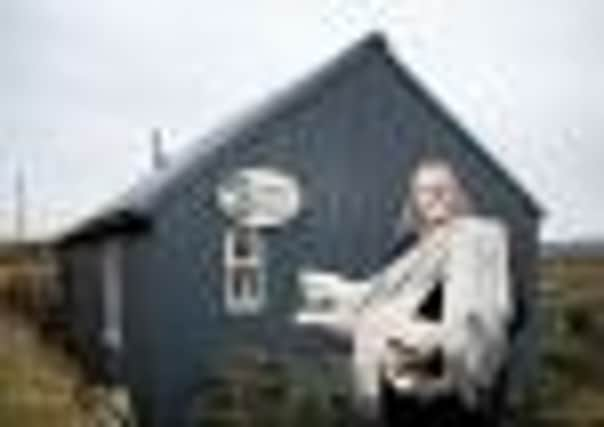Interview: Sheila Roderick, Harris Tweed weaver and costume maker for The Hobbit


Hobbits pride themselves on their smart turnout, although they’ve never shown any interest in shoes, so it’s no surprise that their baggins, jackets and cloaks come from the home of some of the world’s most sought-after fabric. Roderick and Ferguson are independent Harris Tweed weavers with a loom shed on their croft, and who have extended their repertoire to include pure linen cloth and linsey-woolsey, a mixture of wool and linen. “It’s a very old cloth with a history behind it, but nowadays it’s only used for things like battle re-enactments, which is such a shame,” says Roderick.
“The Hobbit work came about by luck because a couple who supplied costumes for drama and TV come to Harris on holiday every year and used to come to our loom shed to buy tweed. They ordered some of the linen because it’s very hard to get and it has been on Broadway, in the Australian National Opera, on the RSC in Regent’s Park for Midsummer Night’s Dream,” she says.
Advertisement
Hide AdAdvertisement
Hide AdRoderick never imagined she would stay and wind up making clothes for hobbits when she went to Scalpay in the early 1970s to visit her parents, who had moved there. However, she fell in love with the Outer Hebrides and since Harris Tweed is woven so deeply into the island culture, it was only a matter of time before she learnt how to make it herself. Marrying a local weaver helped, but Roderick had already done a Harris Tweed weaving course in Stornoway and worked as a hand-spinner.
Toiling together in their shed, the couple turn raw wool from the mill into the famous fabric, as well as looking after their sheep and poultry and launching their boat to catch lobsters and fish. Since 1996 they have been weaving linen too. “There aren’t a lot of linen weavers around any more, although there was once a thriving Scottish industry, as the damp climate is ideal for spinning flax,” she says. “Weaving linen is a different technique from wool, and the mistakes show up more. I’m having a lot of fun, going mad using bright colours.”
Not surprisingly, Roderick’s linen has a tweedy, chunky look – as can be seen in the products she made to be featured in Textiles Scotland’s Modh magazine. “I made a linen skirt and big floppy knitted top and I’d love to do more,” she says.
Despite her growing linen production, Roderick is still closely involved with Harris Tweed and is currently training six independent weavers to work on it. She is also excited about a new mill, funded by Uist Wool, a Community Benefit Society and charity, with backing from the Scottish Government and European Community, that is due to open at Grimsay on Uist next June. “It will be the first mill to open since the 1960s, and will take in local fleeces for processing. There will be scoring, spinning, turning into whatever yarn the customer wants. Weaving will be part of it too. It’s a long time since a Uist Harris Tweed has been produced and we’re hoping it will kick-start an industry down there again.”
Genuine Harris Tweed must be made from pure virgin wool dyed and spun on the islands and handwoven at the home of a weaver in the Outer Hebrides. At present most of the yarn independent weavers use is supplied by one of three mills and usually comes from the mainland, but the new mill will offer spinning facilities for those with their own sheep. “It will be fabulous for the independent Harris Tweed weavers like us and crofters who have flocks and want to make products from their own sheep.”
Now Roderick and Ferguson are planning a trip to the nearest cinema. “We’ve seen photographs where Gandalf is wearing something long and dark, but we’ll have to go to the Stornoway Arts Centre to see the film, or wait until the Screen Machine comes to Tarbert to see it close up. It’s very exciting.”
Twitter: @JanetChristie2
The Hobbit: An Unexpected Journey is released on 13 December; www.scalpaylinen.com